ROOM: The Space magazine is one of the top magazines on space exploration, technology and industry. At ROOM, we share a common dream – promotion of peaceful space exploration for the benefit of humankind, all while bringing you fascinating articles on an array of current topics. Our authors include experts and industry leaders from all over the world, which lets us bring you the newest and accurate information about kepler exoplanet transit hunt.
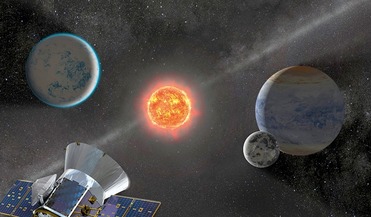 April 2019
Scanning the skies for exoplanets
April 2019
Scanning the skies for exoplanets
...Kepler left off, NASA’s Transiting Exoplanet Survey Satellite (TESS) has begun to scan the skies with high hopes of matching, if not surpassing its predecessor by finding a treasure trove of exoplanets and perhaps landing the ultimate prize in planet-hunting..., NASA has already dispatched a replacement to carry on where Kepler left off. Launched in April 2018, the Transiting Exoplanet Survey Satellite (TESS) is designed to search for planets in...
 August 2018
Exoplanet census promises radical discoveries
August 2018
Exoplanet census promises radical discoveries
... police radar guns to detect speeding cars. Figure 1: The sensitivity regions of the Kepler transit survey (in red) and the WFIRST exoplanet microlensing survey (in blue) are compared to the orbits of the planets in our...planet or star in systems with more than one host star. The combination of the WFIRST exoplanet microlensing survey and Kepler’s transit survey will provide a complete statistical census of planets at all separations. This is the ...
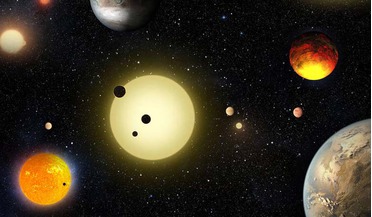 11 May 2016
Kepler scientists announce a major increase in confirmed exoplanet numbers
11 May 2016
Kepler scientists announce a major increase in confirmed exoplanet numbers
...days a week, 365 days a year looking for the tell-tale sign of a would be exoplanet. The technique Kepler uses is known as the transit method and it works by measuring the dip in star light as a planet passes in front... detect the presence of the transiting planet. So far, using this method, Kepler scientists have identified about 4700 exoplanet ‘candidates’ and have validated about 1000 of them as actual exoplanets. Candidate planets at the time...
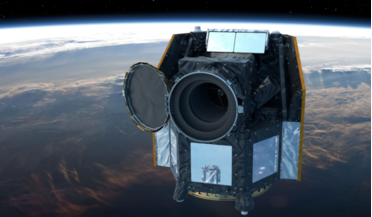 16 December 2019
Cheops, ESA's exoplanet watching telescope launches tomorrow
16 December 2019
Cheops, ESA's exoplanet watching telescope launches tomorrow
...has helped discover nearly 3000 of the 4143+ exoplanets found so far. Cheops will be able to measure the ‘depth’ of the transit I.e the size of the dip in the light due to the exoplanet transit to the level of a few tens of ...project scientist at ESA. “It follows on from CoRoT, from Kepler and from TESS, and it’s the first in a series of three missions from ESA that are dedicated to exoplanet science,” Isaak said. Those other missions include Plato...
 November 2018
How many people does it take to colonise an exoplanet?
November 2018
How many people does it take to colonise an exoplanet?
... Located at 4.2 light years (40,000 billion km), Proxima Centauri b is almost an ideal destination - as far as exoplanets go. But while this distance may be small by astronomical standards, it remains utterly vast on the human scale. The...not a strict, definitive number for colonisation projects. Artist’s concept of the surface of TRAPPIST-1f, an exoplanet about 40 light years from Earth. Cows in space? Sending a ship laden with frozen embryos ...
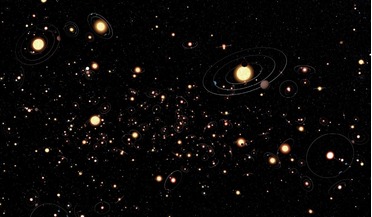 May 2018
PLATO the habitable zone explorer
May 2018
PLATO the habitable zone explorer
... ideas of exoplanets around other stars have changed dramatically in the last couple of decades and the number of new planets that are being discovered is steadily increasing with each dedicated planet-hunting survey. But...based projects, including the SuperWASP, HATnet, and Kelt surveys, as well as the space missions CoRoT, Kepler, and K2. NASA’s upcoming Transiting Exoplanet Survey Satellite (TESS) due for launch this year, will also search for...
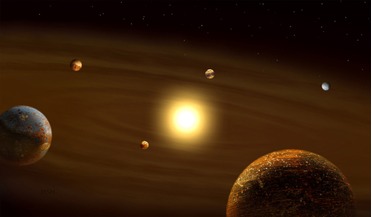 27 July 2019
Hundreds of new planet candidates detected by Kepler
27 July 2019
Hundreds of new planet candidates detected by Kepler
After a year in space scanning the skies in the Southern Hemisphere, NASA’s latest planet hunting telescope TESS (Transiting Exoplanet Survey Satellite) has helped astronomers discover a bumper haul of 21 planets outside our solar system and ...like planets around main sequence stars like our sun as it was designed to, it was proposed that Kepler search for habitable worlds around smaller, dimmer red dwarfs in a different direction to which it had ...
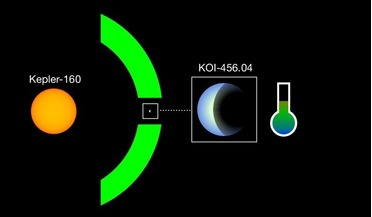 05 June 2020
Exciting exoplanet find around sun-like star
05 June 2020
Exciting exoplanet find around sun-like star
...is not new. It was discovered around ten years ago, followed by the confirmation of two exoplanets, called Kepler-160b and Kepler-160c, four years later. Both of these planets though are substantially bigger than Earth and in...have to wait for the launch of PLATO in 2026 to corroborate their findings. Developed by ESA, the PLAnetary Transits and Oscillations of stars (PLATO) main mission is the discovery of Earth-sized planets around Sun-like stars...
 24 November 2021
Astronomers discover more than 350 possible new exoplanets
24 November 2021
Astronomers discover more than 350 possible new exoplanets
...smaller, dimmer red dwarf stars instead. Dubbed K2, this “Second Light" mission lasted as long as Kepler’s first exoplanet hunt and bumped its count of surveyed stars up to more than 500,000. But, after nine years... a safe orbit, away from Earth. Although NASA’s newest exoplanet mission TESS has continued to survey the brightest stars near Earth for transiting exoplanets, Kepler’s data haul – the spacecraft downlinked roughly twelve gigabytes of ...